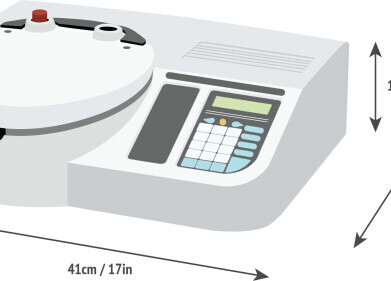Chromatography
How Will 3D Printing Affect Chemistry?
Jun 29 2014
Since its first use around 30 years, 3D printing has been developed and furthered to become important in a wide variety of industries. This method of production involves taking a 3D scan of an object or substance and recreating it accurately and specifically by printing the individual components of the scan and fusing them together. It is used in fields as varied as engineering, education, industrial design, jewellery production, dental and medical industries, and even the realm of arts. Now it is set to revolutionise practices in chemistry – here are some the areas it is expected to affect.
Recreation of Human Tissue
As elaborated in the article 3D Printer 'Bioink' Could be the Next Lab Equipment Breakthrough, the use of 3D printing to recreate human tissue is a very tangible possibility which could become a reality within the next decade. Rapid progress is being made in this field, not least due to the innovation of a multi-armed printer capable of printing multiple materials simultaneously.
Of course, such a breakthrough could be instrumental in repairing and replacing damaged, dying or destroyed parts of the human body. This news could be life-changing for many born with deformities or suffering from diseases. However, it also has even farther reaching consequences, too.
By recreating completely body parts from 3D scans, surgeons will have the luxury of examining a 3D model of the patient prior to attempting an operation. This will also allow for trial runs before the operations, and for more accurate education and training of junior doctors.
Similarly, such recreations can help the field of forensic science by allowing us to fully reassemble a body part which has suffered severe trauma and infer possible causes through operation, without the unpleasant necessity of operating upon the subjects themselves.
Drug Testing
Another possible advantage of recreating accurate copies of human tissue is that it can be used in clinical trials or cosmetic testing to test out unknown drugs. Such practices could alleviate the need for the morally-questionable current techniques of animal testing, or, ideally, replace them entirely.
Furthermore, such testing would yield more accurate results since the tissues would be perfect copies of human specimens. As such, more sophisticated drug design could potentially be an outcome of 3D printing.
Custom Lab Equipment Production
3D printing has already been used to produce all sorts of materials, from bicycles to dentures, and much attention has been devoted to the possibility of designing and constructing customised lab equipment using the technique. Such a process would reduce costs, labour, time and effort involved.
One such area in particular where this has been pursued is chromatography. The Effects of Bead Overlap on Performance of 3D Printed Packed Bed Columns goes into more detail about how such techniques could alter the overlapping of beads on the columns and how this would affect their performance.
Digital Edition
Lab Asia Dec 2025
December 2025
Chromatography Articles- Cutting-edge sample preparation tools help laboratories to stay ahead of the curveMass Spectrometry & Spectroscopy Articles- Unlocking the complexity of metabolomics: Pushi...
View all digital editions
Events
Jan 21 2026 Tokyo, Japan
Jan 28 2026 Tokyo, Japan
Jan 29 2026 New Delhi, India
Feb 07 2026 Boston, MA, USA
Asia Pharma Expo/Asia Lab Expo
Feb 12 2026 Dhaka, Bangladesh



















